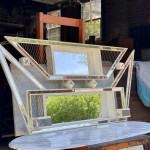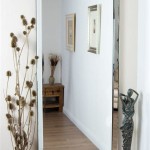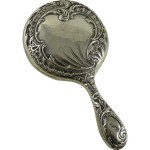Building a Frame for a Large Mirror
Framing a large mirror presents unique challenges compared to framing smaller pictures or artwork. The size and weight of the mirror necessitate a robust frame design and specific construction techniques to ensure both stability and aesthetic appeal. This article outlines the process of building a frame for a large mirror, covering material selection, measurements, assembly, and finishing.
Material selection significantly impacts the frame's durability and visual impact. Hardwoods like oak, maple, or cherry offer excellent strength and can be stained or painted to match existing décor. While softer woods like pine are more economical, they may require additional reinforcement, especially for very large mirrors. Engineered wood products like MDF (medium-density fiberboard) provide a smooth, paintable surface but lack the inherent strength of hardwood.
Accurate measurements are crucial for a well-fitting frame. Measure the mirror's dimensions precisely, taking multiple readings to ensure accuracy. The frame's internal dimensions must match these measurements exactly. The frame width and depth will depend on the mirror's size and the desired aesthetic, with larger mirrors generally benefitting from wider and deeper frames. Add the chosen frame width to the mirror's dimensions twice (once for each side) to determine the total length and width of the frame pieces.
Cutting the frame pieces requires precision. A miter saw is the preferred tool for achieving accurate 45-degree angles for the corners. Mark the cut lines carefully based on the calculated dimensions and double-check before cutting. Ensure the saw blade is sharp and appropriate for the chosen wood type to prevent splintering or chipping. A miter box can be used for smaller frames, but a miter saw offers greater control and accuracy for larger pieces.
Assembling the frame requires careful alignment and secure joinery. Wood glue provides a strong initial bond. Apply glue evenly to the mitered edges and clamp the pieces together, ensuring tight corners and a flush surface. Brads or finishing nails further reinforce the joints. Pre-drilling pilot holes prevents wood splitting, especially in hardwoods. Consider using corner clamps specifically designed for frame assembly to maintain perfect 90-degree angles throughout the gluing and clamping process.
Reinforcing the frame adds structural integrity, particularly for large and heavy mirrors. Adding corner braces, either metal L-brackets or triangular wooden blocks glued and screwed into the corners, significantly strengthens the frame. For exceptionally large mirrors, consider adding a center support running along the back of the frame, especially if the mirror will be hung vertically. This support helps distribute the weight and prevents bowing or sagging over time.
Attaching the mirror to the frame requires a secure and stable method. Mirror clips, specifically designed for this purpose, are available in various sizes and styles. These clips grip the mirror's edges and are screwed into the frame's back. Alternatively, a backing board, typically made of plywood or MDF, can be attached to the back of the frame. The mirror is then adhered to the backing board using mirror mastic, a specialized adhesive that provides a strong and secure bond while allowing for slight movement to prevent cracking due to temperature changes.
Finishing the frame enhances its appearance and protects the wood. Sanding the frame smooth removes any imperfections and prepares the surface for finishing. Apply a wood stain to enhance the natural grain or use a primer and paint for a solid color. Several coats of sealant, such as polyurethane, protect the frame from moisture and damage. Allow ample drying time between each coat and lightly sand between coats for a smooth and professional finish.
Hanging a large framed mirror requires appropriate hardware and careful consideration of wall construction. Heavy-duty D-rings or wire hangers, attached securely to the frame's back, are essential for supporting the weight. Use wall anchors appropriate for the wall type and the combined weight of the mirror and frame. Ensure the anchors are installed into studs or solid masonry for optimal support. Seek assistance when lifting and hanging large mirrors to prevent injury or damage.
Careful planning and execution are essential for successfully building a frame for a large mirror. Selecting appropriate materials, performing precise measurements and cuts, implementing robust joinery techniques, and reinforcing the frame are critical steps. Choosing suitable hanging hardware and considering the wall structure ensures the mirror’s secure and stable display. With careful attention to detail, a custom-built frame enhances the aesthetic appeal of a large mirror and provides lasting functionality.

How To Frame A Mirror

How To Add A Wood Frame Large Wall Mirror For Under 20 Dream Design Diy

Woodsmith Walnut Mirror Frame Plans Woods

Diy Rustic Mirror Houseful Of Handmade

Beautiful Huge Barnwood Mirror The Largest One Weve Made Metal Wall Decor Living Room Frame Diy Rustic Mirrors

Shiplap Reclaimed Styled Wood Framed Mirror 20 Stain Colors

Large Wall Mirror Wood Framed Bathroom Mirrors Rustic

Diy Window Frame Mirror For The Bathroom Houseful Of Handmade

Thin Wood Rectangle Wall Mirror 24 W X 36 H West Elm

Mahogany Mirror Country Wood Frame Bathroom








